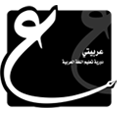اختلاف الإمام الكسائي مع النحاة الآخرين في النحو
Keywords:
Difference, Al-Kisai, SyntaxAbstract
Abstract
The research question is: What are the differences between Imam Al-Kisai and other grammarians in Nahw (Arabic grammar)? This research is comparative using a qualitative approach. The comparative method aims to compare the value of one or more independent variables across two or more communities, individuals, different times, or a combination of all these factors. This research is library research, allowing the researcher to explore and analyze relevant and appropriate written sources, such as books, articles, and other documents, to support a comprehensive understanding of the research topic. The findings of this research are: The differences between Imam Al-Kisai and other grammarians in Nahw include the following issues: the subject of the noun occupied by another, whether "na'am" and "bi'sa" are verbs or nouns, the verbal nature of the style of exclamation, the permissibility of advancing the predicate of "ma zala" and similar expressions, the permissibility of conjunction before the completion of the news in the context of "inna", the factor acting on the excluded noun, the permissibility of softening the vocative triliteral if its middle letter is a vowel, the factor raising the present tense verb, the operation of "hatta", advancing the object and the subject on the conditional answer, the permissibility of advancing the object of the conditional sentence over the conditional particle, and the issue of "kuntu azunnu an al-‘aqrab" or the "Zanburiyyah" issue.
مستخلص البحث
أما سؤال البحث هو: ما اختلاف الإمام الكسائي مع النحاة الآخرين في النحو. نوع هذا البحث هو بحث مقارن باستخدام النهج الكيفي. طريقة المقارنة هي البحث الذي يهدف إلى مقارنة قيمة متغير مستقل أو أكثر في مجتمعين أو أكثر، في شخص أو أكثر، أو في أوقات مختلفة، أو في مزيج من كل ذلك. وهذا البحث هو البحث المكتبي مما مما يتيح للباحث استكشاف وتحليل المصادر المكتوبة ذات الصلة والمناسبة، مثل الكتب والمقالات والوثائق الأخرى، بهدف دعم جهود الفهم الشامل لموضوع البحث. ونتائج هذا البحث هي: أن اختلاف الإمام الكسائي مع النحاة الآخرين في النحو هو: في مسألة ناصب الاسم المشغول عنه، هل "نعم وبئس" فعلان أم اسمان؟، فعلية أسلوب التعجب، جواز تقديم خبر ما زال وما في معناها، جواز العطف في موقف إن قبل تمام الخبر، العامل في المستثنى، جواز ترخيم المنادى الثلاثي إذا كان أوسطه متحركا، عامل الرفع للفعل المضارع، عمل حتى، تقديم المنصوب والمرفوع على جواب الشرط، جواز تقديم المفعول بالجزاء على حرف الشرط، مسألة "كنت أظن أن العقرب" أو المسألة الزنبورية
References
An-Nabiil, M. S., & Sarifudin, M. (2024). Al-Farra’ dan Mazhab Kufah. Ihtimam: Jurnal Pendidikan Bahasa Arab, 7, 26–36.
Aryobimo, B., Abdurrahman, M., & Sopian, A. (2023). The Nahwu Kufah Mazhab’s View in Data Approach to Determining Rules. International Journal of Linguistics, Literature and Translation (IJLLT), 72–80.
Fachrudin, A. A. (2021). Linguistik Arab: Pengantar Sejarah dan Mazhab. Diva Press.
Fakhrurrozy, M. I. (2018). Nahwu Dan Shorof Perspektif Pembelajar Bahasa Kedua. Semnasbama: Seminar Nasional Bahasa Arab Mahasiswa V Tahun 2021 HMJ Sastra Arab Fakultas Sastra Universitas Negeri Malang, 2(0), 103–112.
Febriyanti, U., Abdurrahman, M., & Sopian, A. (2021). Is Historical Study of Nahwu on Madrasah Basra and Kufa Important to Teach? The Analysis of Opinion on Indonesian AFL Students. Al-Ta’rib : Jurnal Ilmiah Program Studi Pendidikan Bahasa Arab IAIN Palangka Raya, 9(1), 25–34. https://doi.org/10.23971/altarib.v9i1.2522
Fuadah, N., & Shohib, Mu. I. (2022). Ushul an-Nahwi (Kajian Epistimologi Sintaksis Arab). Lisan an Nathiq : Jurnal Bahasa Dan Pendidikan Bahasa Arab, 4(1), 83–94.
Harianto, N. (2018). Beberapa Perbedaan Masalah- Masalah Nahwu Antara Bashrah dan Kufah dalam Kitab Al-Inshaaf fi Masa’il Al-Khilaf bain Al-Nahwiyyin Al-Bashriyyin Wa Al-Kufiyyin dan Dalil-Dalil Nahwu yang digunakan. Tsaqofah Dan Tarikh, 39–48.
Hasibuan, A. I., Andika, K., Febrianisa, S., Sugiyono, S., & Pribadi, M. (2023). Moderasi Mazhab Mesir terhadap Mazhab Kufah, Basrah dan Andalusia. Nady Al-Adab: Jurnal Bahasa Arab, 20, 76–88.
Hazuar. (2019). Konsep I’rab dalam Pandangan Ibrahim Mustafa dan Ibrahim Anis. Jurnal Arabiyatuna, 3.
Hidayatullah, M. S. (2017). Cakrawala Linguistik Arab (T. Lesmana, Ed.). Jaka: PT. Grasindo.
Latifah Fauziah, I., & Sopian, A. (2023). Kajian Inna : Dialektika Aliran Basrah dan Kufah dalam Buku Al-Inshâf fî Masâil Al-Khilâf. Ukazh: Journal of Arabic Studies, 4(1), 102–118. https://doi.org/10.37274/ukazh.v4i1.739
M. Kamal. (2022). Mazhab-Mazhab Sintaksis Bahasa Arab Nahwu (Basrah, Kufah, Bagdad, Andalusia, Mesir). Jurnal Bina Ilmu Cendekia, 3(1), 1–5. https://doi.org/10.46838/jbic.v3i1.119
Mawaddah, S. L. (2022). Problematika Pembelajaran Nahwu Menggunakan Metode Klasik Arab Pegon di Era Modern. Maharaat: Jurnal Pendidikan Bahasa Arab, 4(2), 102–119. https://doi.org/10.18196/mht.v4i2.12976
Mualif, A. (2019). Metodologi Pembelajaran Ilmu Nahwu dalam Pendidikan Bahasa Arab. Al-Hikmah, 1.
Roji, F. (2020). Pembaruan Nahwu Menurut Shauqi Dhaif dan Ibrahim Mustafa. El-Ibtikar, 9(June 2020).
Shefia, N., Zamhuri, M. T. Z., & Afifah, F. N. (2021). Pemanfaatan Huruf Pegon Dalam Mempermudah Pembelajaran Nahwu. Semnasbama: Seminar Nasional Bahasa Arab Mahasiswa V, 5, 189–201. Retrieved from http://prosiding.arab-um.com/index.php/semnasbama/article/view/783
Sugiyono. (2021). Metode Penelitian Kuantitatif, Kualitatif dan R&D. Bandung: Penerbit Alfabeta.
Tamim Mulloh. (2020). موقف الشيخ العمريطي في آرائه ومصطلحاته النحوية بين مدرستي البصرة والكوفة في الدرة البهية نظم الأجرومية. El-Jaudah : Jurnal Pendidikan Bahasa Dan Sastra Arab, 1(1), 83–103. https://doi.org/10.56874/faf.v1i1.74
Taufik, S. Ag., M.A, T. S. A. . M. . (2020). Mazhab-Mazhab Ilmu Nahwu Dalam Sastra Arab Klasik. AL-AF’IDAH: Jurnal Pendidikan Bahasa Arab Dan Pengajarannya, 4(1), 65–87. https://doi.org/10.52266/al-afidah.v4i1.498
ابن الأنباري, أ. ا. (2021). الإنصاف في مسائل الخلاف بين البصريين والكوفيين (م. م. ا. عبد الحميد, Ed.). بيروت: دار الفكر.
ابن الأنباري, ك. ا. ع. ا. م. (1985). نزهة الألباء في طبقات الأدباء. الزرقاء: مكتبة المنار.
ابن مختار, م. (1991). تاريخ النحوي الكوقي، من خلال معاني القرآن للقراء. جامعة الطرابليس.
الأزهاري, خ. ب. ع. ا. (2006). شرح التصريح على التوضيح (م. ب. ع. السود, Ed.). بيروت: دار الكتب العلمية.
الإستانبولي, ص. ا. ا. (2010). الموفي في النحو الكوفي. In مجلة مجمع اللغة العربية بدمشق. دمشق: مجمع اللغة العربية بدمشق.
الزبيدي, أ. ب. م. ب. ا. (2007). طبقات النحويين واللغويين. القاهرة: دار المعارف.
القنوجي, ص. ب. ح. (1978). أبجد العلوم. دمشق: دار الكتب العلمية.
الكسائي, ع. ب. ح. (2009). ما تلحن فيه العامة (ر. عبد التواب, Ed.). القاهرة: مكتبة الخانجى.
النديم, ا. (2009). الفهرست. بيروت: دار المعرفة.
بختة, ب. ع., & نصيرة, ح. (2020). منهج الكسائي بين أسس التقعيد النحوي واتجاهات مدرسة الكوفة. جامعة ابن خلدون.
ضيف, ش. (2019). المدارس النحوية. القاهرة: دار المعارف.
عمر, أ. م. (2007). البحث اللغوي عند العرب. القاهرة.
مكرم, ع. ا. س. (1962). المدرسة النحوية في مصر والشام في قرنين سابع والثامن من الهجرة. بيروت.
Downloads
Published
Issue
Section
License
Copyright (c) 2024 Muhammad Rafif Irfan, Fakhrurozi, Ade Muhammad Ritonga, Abdulfattah Esmail Abdullah Ahmed (Author)

This work is licensed under a Creative Commons Attribution-NonCommercial-ShareAlike 4.0 International License.







